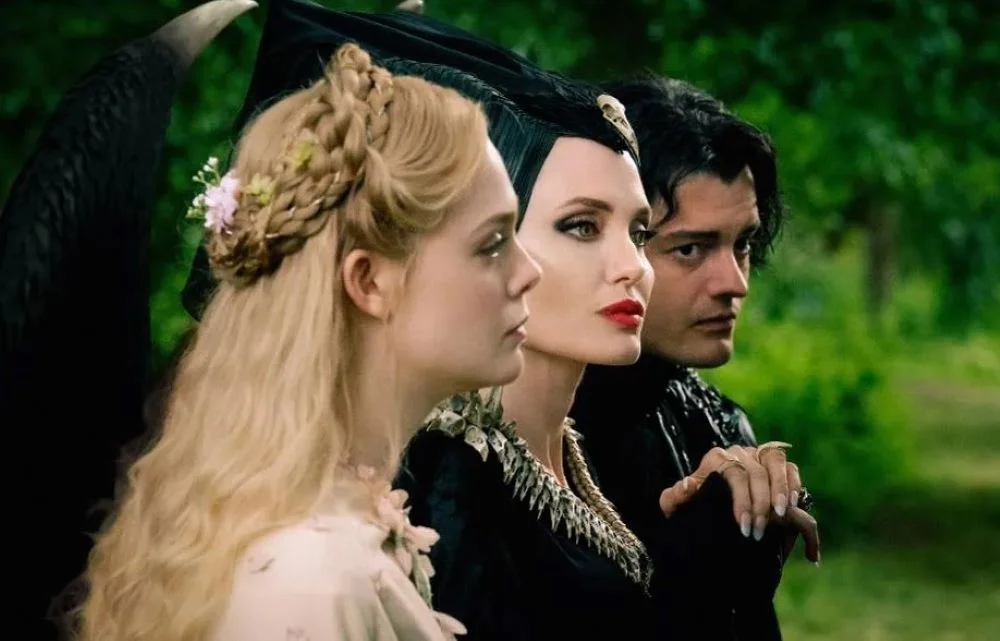Maleficent Wouldn’t Be a Lackey: A Story of Strength and Independence
Imagine a world in which the formidable sorceress Maleficent was reduced to serving someone. It doesn’t seem right, does it? Maleficent is renowned for her ferocious independence and power; she is not a follower at all. Her presence demands attention, so it’s difficult to imagine her following orders.
However, why is it the case? What distinguishes her from other characters that could be readily conformed to? Maleficent is more than just a villain—she’s a representation of strength and autonomy, unwavering in a society where many are eager to submit. Let’s examine more closely what makes her so special.
1. Maleficent’s Unyielding Power: More Than a Villain

In Disney’s enormous magical universe, Maleficent is more than just another villain—she represents something much greater. Her remarkable horns, ebony wings, and alluring aura set her apart from other classic figures, both good and bad. But her beauty isn’t what gives her power. No one dares oppose the powerful force of Maleficent’s sorcery. Her strength derives from a profound grasp of her abilities and her refusal to be controlled by anyone; she is not motivated by mindless loyalty or petty ambitions. Her character is defined by her independence and sense of self, which elevates her above the level of a villain.
Her deliberate use of power only serves to heighten her allure. Maleficent is an intentional opponent, in contrast to many others who just want chaos in their lives. She doesn’t curse Aurora in Sleeping Beauty out of random hatred; rather, it’s a reaction to loss and treachery. She commands respect not only by her overwhelming presence but also by her power, using her powers like a queen who understands her own value.
Nor is her power limited to physical force. Maleficent is incredibly brilliant; she anticipates everything and keeps one step ahead of everyone around her. Her magical skills and smart mind combine to make her a formidable force that is difficult to subdue or control.
2. A Story of Betrayal and Revenge
A profound, intimate betrayal is at the heart of Maleficent’s tale. She had a strong link with Stefan since, in her younger years, she had faith in love and fidelity. But that trust was destroyed, and she was permanently changed when he betrayed her for his own gain. The pivotal moment in her story is this betrayal. It demonstrates that Maleficent was not born wicked but rather that her heart was shielded by a wall of protection because of external forces.
Maleficent’s act of retaliation is based on this act of betrayal. Cursing Aurora represented her broken heart more than just a means of getting even with Stefan. Carefully constructed and full of malicious intent, the curse reflects the emotional suffering that Maleficent went through. It serves as a reminder that her personal experiences are intricately linked to her desire for vengeance and power, which gives her acts an even more nuanced and multifaceted quality.
Beneath her vengeful mission, though, is still a sense of loss. The pain Maleficent felt from her betrayal is what drove her to change from a frightening sorcerer to an optimistic little fairy. Her acts, in a sense, are more about coping with the grief she’s experienced than they are about malicious intent.
3. Maleficent’s Complex Relationship with Aurora

Maleficent’s relationship with Aurora changes throughout time, despite the fact that she curses the young princess as payback. Gradually, what starts off as an impersonal grudge transforms into something far more intricate. Unable to completely separate herself from the lives she touched, Maleficent keeps watch over Aurora from a distance, resembling a silent guardian. Though Maleficent initially refuses to acknowledge it, they grow to have an odd affinity.
As Aurora becomes older, Maleficent begins to recognize more aspects of herself in the little child—a strength that she was surprised to find as well as innocence and purity. This link calls into question Maleficent’s initial intentions. When she understands that Aurora is not her enemy, her heart—which had been hardened by betrayal—begins to soften. Once a symbol of her anger, the curse starts to lose its potency when Maleficent’s protective instincts take over.
This connection brings Maleficent’s inner turmoil to light. She finds herself torn between her increasing attachment to Aurora and her desire for vengeance. It’s a lovely illustration of how, in the face of unanticipated love, even the hardest, most vindictive hearts may soften.
4. Why Maleficent Would Never Be a Lackey
Her ferocious independence is one of Maleficent’s most distinguishing characteristics. She’s never been one to take instructions and be reduced to a minion, not like some villains who are happy to take the back seat. Maleficent makes it clear from the beginning that she is in charge of her fate. She serves no master and makes no bows to kings or queens. Her own desire, not the orders of others, is what motivates her activities.
She differs from a lot of other characters in the Disney realm in that she refuses to be controlled. Maleficent never wavers in the face of adversity, sacrificing her principles or ambitions to further the objective of another. Her strength lies in her disobedience, which is what makes her genuinely untouchable. Instead of wanting authority for its own purpose, she sees power as a reflection of her inner independence.
Maleficent’s journey is also about taking back what is rightfully hers, like her wings, her independence, and her dignity. Giving up her independence would mean becoming someone else’s lackey, and she would never do that. In her world, the only way to make sure that no one ever tries to control her again is to be a leader—even a dreaded one.
5. Maleficent’s Symbolism in Modern Storytelling
Maleficent represents empowerment and independence and is more than just a fictional figure. Maleficent is a complicated, emotive, and deeply moral figure that stands out in a world where many female villains are portrayed as evil simply for the purpose of being evil. Her tale of betrayal, retaliation, and ultimate atonement touches on more general themes of resilience, trust, and independence.
She stands for the notion that women can be strong without other people’s approval in contemporary storytelling. Maleficent’s power originates from her own experiences and the decisions she makes in reaction to them, not from outside influences. She serves as a reminder that real strength originates from within and that one may overcome hardship even when it appears unavoidable.
These days, more stories feature complicated female characters that don’t easily fit into the categories of “good” or “evil,” making the symbolism all the more relevant. Maleficent’s journey serves as a metaphor for the ideas that vulnerability and strength may coexist and that often the most interesting stories are the ones that subvert stereotypes.







